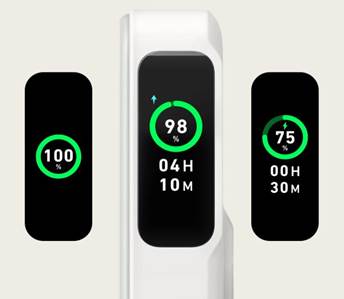Choosing the right power bank for your device ensures
you stay connected and powered up, no matter where you are. With the vast array
of power banks available, it can be daunting to select the perfect one that
meets your needs. This guide will walk you through the essential features to
consider, how to match your device’s battery requirements, and the top brands
and models available. We’ll also provide tips on maximizing the lifespan of
your power bank for long-term use and reliability.

Key Features to Consider When
Choosing a Power Bank
Battery
Capacity (mAh)
The capacity of a power bank is measured in
milliampere-hours (mAh) and determines how much charge it can hold. Higher
capacity power banks (10,000 mAh and above) are ideal for multiple charges or
charging larger devices like tablets. If you primarily need to charge a
smartphone, a power bank with 5,000 to 10,000 mAh may suffice. Always consider
your usage patterns to decide the appropriate capacity.
Output Power (W) and Charging Speed
The output power of a power bank,
measured in watts (W), affects charging speed. A higher output power means your
devices will charge faster. Look for power banks with at least 18W for fast
charging. If your device supports it, consider power banks with Power Delivery
(PD) or Quick Charge (QC) technology for even faster charging times.
Size,
Portability, and Weight
Portability is crucial if you need
to carry your power bank daily. Smaller power banks are generally lighter and
easier to carry but offer less capacity. Larger power banks, while providing
more power, can be bulkier and heavier. Balance your need for portability with
the required battery capacity.
Compatibility
with Your Devices
Ensure the power bank you choose is
compatible with your devices. Check the connectors and charging standards. Most
power banks come with USB-A and USB-C ports, supporting a range of devices. If
you own multiple devices, consider a power bank with multiple ports for
simultaneous charging.
How to Match a Power Bank to Your
Device’s Battery Requirements
Matching Power Bank Capacity to
Your Device’s Battery
To determine the appropriate power
bank capacity, compare it to your device’s battery capacity. A good rule of
thumb is to choose a power bank that offers at least as much capacity as your
device’s battery. For example, if your smartphone has a 3,000 mAh battery, a
6,000 mAh power bank can fully charge it about twice.
Charging Needs for Smartphones,
Tablets, and Laptops
Different devices have different
power requirements. Smartphones typically need less power than tablets or
laptops. For smartphones, a power bank with 5,000 to 10,000 mAh and 18W output
should be sufficient. Tablets require higher capacity power banks (10,000 to
20,000 mAh) with around 30W output. For laptops, especially those with USB-C
charging, opt for power banks with 20,000 mAh and 45-60W output.

The Best Power Bank Brands and
Models for Your Needs
Top Power Bank Brands on the Market
When selecting a power bank,
consider reputable brands known for quality and reliability. Some top brands
include Anker. These companies have a track record of producing durable and
efficient power banks, offering good warranties and customer support.
Popular Anker Power Bank Models and
Their Features
Anker is well-known for its
reliable and high-performance power banks, catering to a range of charging
needs. The Anker MagGo power bank (10K) features Wireless PowerIQ™️, delivering
2x faster charging for iPhones through magnetic wireless charging. With a
10,000mAh capacity, it provides 1.8 full charges for your iPhone 15 Pro, making
it a great option for on-the-go use. The smart display shows real-time battery
percentage and charging time remaining for added convenience. Anker's Wireless
PowerIQ™ technology combines advanced algorithms and powerful hardware,
offering up to 95% energy efficiency and 15W wireless charging. Other popular
models offer excellent portability and fast charging for a range of devices,
including laptops.
How to Maximize the Lifespan of
Your Power Bank
Storing
Your Power Bank Properly
Proper storage is essential for
prolonging your power bank's lifespan. Store it in a cool, dry place, away from
direct sunlight and heat sources. Extreme temperatures, such as leaving it in
your car or exposing it to freezing conditions, can lead to battery
degradation. Always ensure your power bank is stored in moderate, stable
temperatures to maintain optimal performance.
Avoiding Overcharging and Excessive Use
Overcharging can significantly
reduce the lifespan of your power bank. While most modern power banks feature
built-in overcharge protection, it’s still a good practice to unplug once fully
charged. Additionally, avoid using the power bank while it's charging, as this
can cause overheating and put unnecessary strain on the battery, potentially
affecting its long-term performance.
Regular Maintenance Tips for Longevity
Regularly check your power bank’s condition
and usage. Charge it at least once every three months to keep the battery
healthy, even if you’re not using it frequently. Clean the ports to prevent
dust buildup and ensure a stable connection. Following these habits can
significantly extend the life of your power bank.
Conclusion
Selecting
the right power bank requires understanding your device’s power needs and
balancing capacity with portability. By focusing on key features and choosing
reputable brands, you can ensure reliable and efficient charging. Additionally,
following maintenance tips prolongs your power bank’s lifespan, ensuring it
remains a valuable companion on the go. Stay charged and always ready with the
perfect power bank for your needs.
